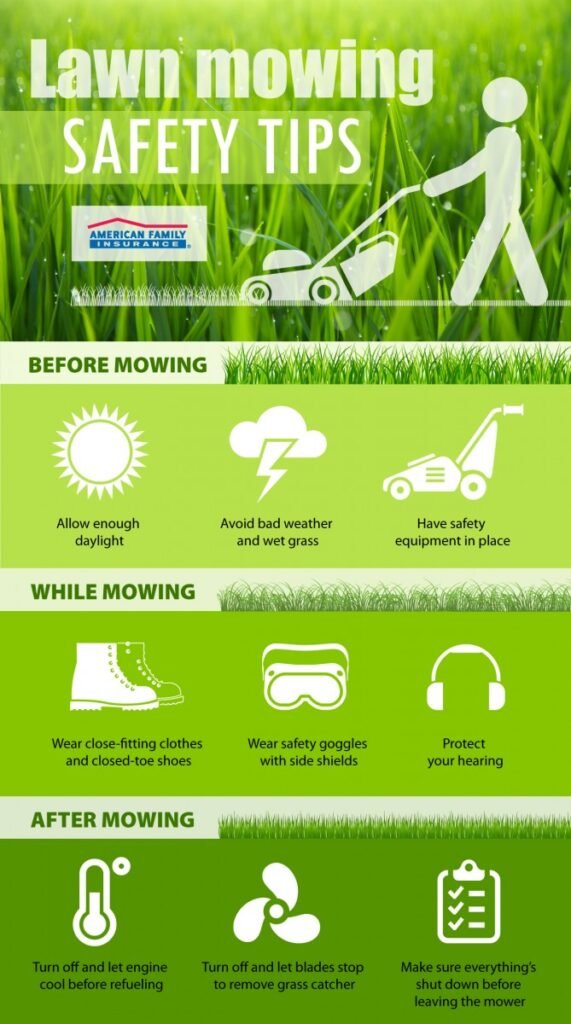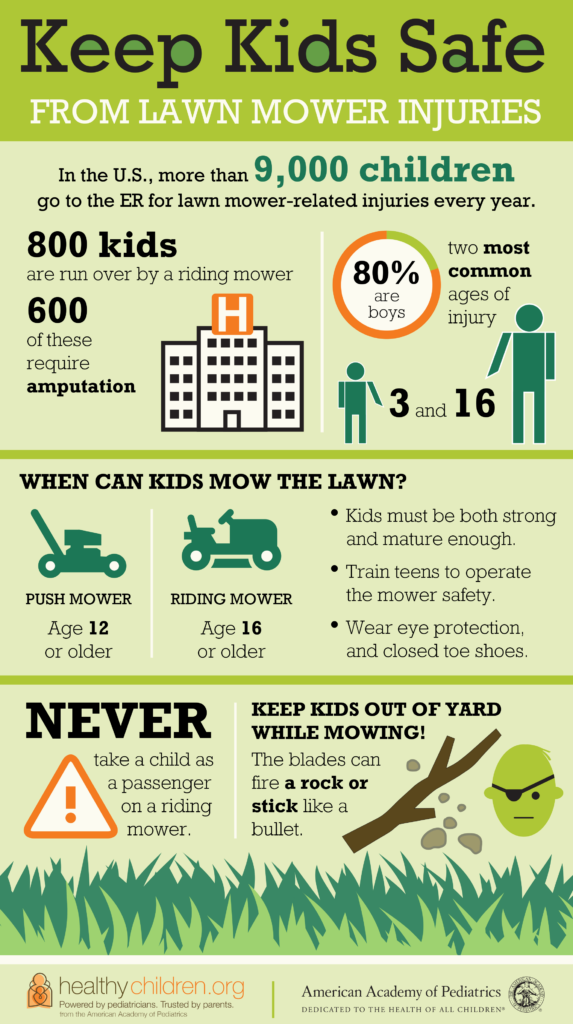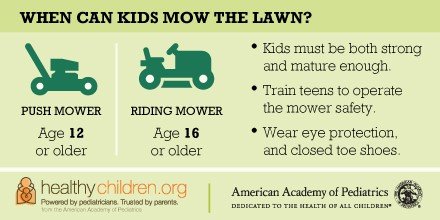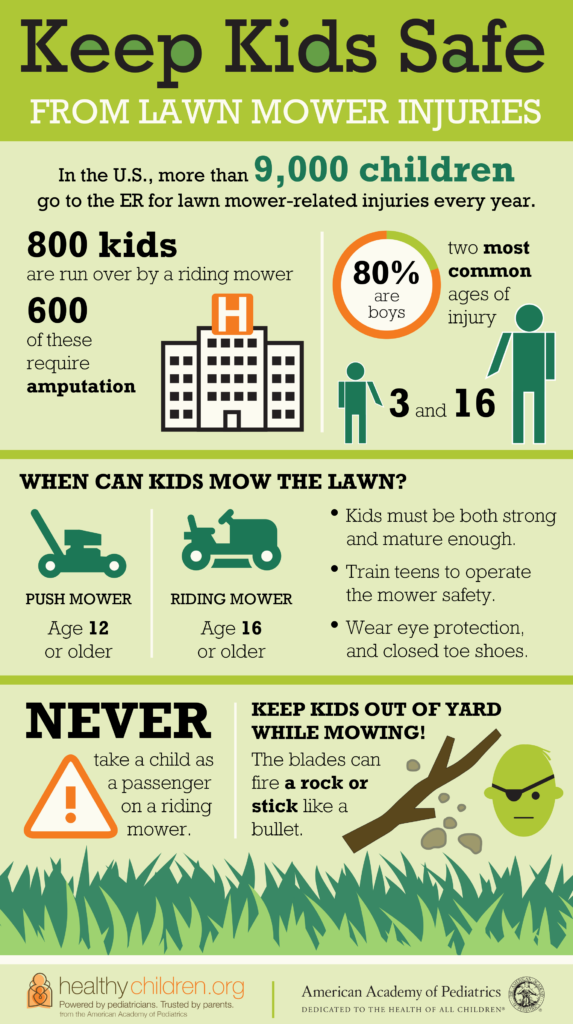If you’re new to the world of lawn maintenance, it’s important to prioritize safety while operating a lawn mower. In this article, we will provide you with a concise yet informative guide on lawn mower safety tips for beginners. Whether you’re tackling your first mowing session or looking for a refresher, these essential tips will help ensure a safe and enjoyable experience. Additionally, we will explore the value of lawn mower safety training videos, which can provide valuable insights and instructions that will help you mow with confidence. So, let’s get started on your path to becoming a safe and skilled lawn mower operator!

This image is property of content.presspage.com.
Choosing the Right Lawn Mower
When it comes to choosing the right lawn mower for your needs, there are a few factors to consider. First and foremost, you need to take into account the size of your lawn. For smaller lawns, a push mower or a reel mower may be sufficient. However, if you have a larger lawn, you may want to consider investing in a ride-on mower or a self-propelled mower to make the task easier and more efficient.
In addition to the size of your lawn, you also need to select the appropriate type of lawn mower. There are various types available, including gas-powered, electric, and battery-operated mowers. Each type has its own advantages and disadvantages, so it’s important to do your research and choose the one that best suits your needs and preferences.
Lastly, before you start mowing, make sure that your lawn mower is in good condition. Regular maintenance and servicing are essential to ensure the smooth operation of your mower. Check the blades, the engine, and other components to ensure that everything is working properly. It’s always a good idea to consult the owner’s manual for specific maintenance instructions.
Preparing the Lawn
Before you begin mowing, it’s essential to prepare your lawn properly. This involves removing any obstacles that could potentially be hazardous or damage your lawn mower. Take a walk around your yard and pick up any rocks, branches, toys, or other objects that could get in the way. By removing these obstacles, you’ll be creating a safer environment for yourself and your mower.
In addition to removing obstacles, it’s also important to clear the area of debris. Rake up any leaves, twigs, or clumps of grass that may have accumulated on your lawn. This will not only make mowing easier but will also help prevent clogging and damage to your mower. A clean and debris-free lawn will ensure a smoother mowing experience and better results.
Furthermore, take the time to inspect the terrain for potential hazards. Look out for tree roots, holes, or uneven surfaces that could pose a risk while mowing. By identifying and addressing these hazards beforehand, you can minimize the chances of accidents or damage to your mower. It’s always better to be safe than sorry, so make sure your lawn is in a suitable condition before starting your mowing session.

This image is property of nebraskayardcare.com.
Personal Protective Equipment
To ensure your safety while operating a lawn mower, it’s important to wear the appropriate personal protective equipment (PPE). Start by wearing sturdy footwear that provides good grip and protection for your feet. Closed-toe shoes or work boots are ideal, as they can protect your feet from flying debris or accidental contact with the mower’s blades.
Another essential piece of PPE is safety glasses to protect your eyes from any debris that may be thrown up during mowing. Whether it’s small rocks, grass clippings, or insects, having safety glasses on can prevent eye injuries and keep your vision clear. Remember, prevention is key when it comes to protecting your eyes, so don’t forget this essential safety gear.
Lastly, when operating a lawn mower, it’s important to protect your hearing from the loud noise it produces. The constant exposure to the loud noise of a mower can cause hearing damage over time. Therefore, it’s advisable to use hearing protection such as earplugs or earmuffs to reduce the risk of long-term hearing problems. Your ears will thank you for taking this extra precaution!
Understanding the Lawn Mower
Before you start mowing, it’s crucial to understand your lawn mower and how it works. Begin by reading the owner’s manual thoroughly. The manual contains important information about the specific features, maintenance requirements, and safety guidelines for your particular model of lawn mower. Familiarize yourself with this information to ensure safe and effective operation.
In addition, take the time to familiarize yourself with the controls of the lawn mower. Understand how to start and stop the engine, engage the blades, and adjust the cutting height. Knowing how to operate the controls correctly will not only enhance your mowing experience but also prevent any accidental damage to the mower or yourself.
Furthermore, it’s essential to know the limitations of your lawn mower. Different mowers have different capabilities and are designed for specific types of terrain and grass conditions. If you have a particularly challenging lawn with slopes or rough terrain, make sure your mower is suitable for these conditions. Always use the mower within its intended limitations to ensure optimal performance and safety.
This image is property of www.assh.org.
Safety Precautions
When it comes to lawn mower safety, there are a few key precautions that you should always keep in mind. First and foremost, never mow the lawn while barefoot. Always wear appropriate footwear to protect your feet from the mower’s blades or any potential hazards on the ground. Remember, even a small pebble can cause serious injury if it gets kicked up by the blades.
In addition, it’s important to keep children and pets away from the mower while you’re mowing. The noise and movement of the mower can attract their curiosity, but it’s crucial to establish a safe distance to prevent accidents. Assign a designated area for them to play or supervise them indoors while you focus on mowing. Ensuring their safety is crucial for a worry-free mowing experience.
Furthermore, it’s best to avoid mowing wet or damp grass. Wet grass can be slippery and increases the risk of slipping or losing control of the mower. Additionally, wet clippings can clump together and clog the mower, affecting its performance. Always wait for the grass to dry before mowing to ensure a safer and more efficient mowing experience.
Starting and Stopping the Lawn Mower
Properly starting and stopping your lawn mower is essential for both safety and maintenance purposes. When starting, always engage the parking brake to prevent accidental movement of the mower. This will provide stability and ensure that the mower stays in one place while you prepare for mowing.
Additionally, it’s crucial to ensure that the blades are disengaged before starting the mower. This will prevent any accidental injury from the spinning blades. Familiarize yourself with the controls on your specific mower model to know how to properly disengage the blades before starting the engine.
Finally, when you need to refuel your mower, make sure to shut off the engine before doing so. This is an important safety measure to prevent any fuel-related accidents or fires. Follow the manufacturer’s instructions regarding refueling, as different mowers may have specific requirements or fuel recommendations.

This image is property of www.healthychildren.org.
Mowing Techniques
To achieve an evenly cut and healthy-looking lawn, it’s important to employ proper mowing techniques. Start by following a systematic mowing pattern. This can be a straight back-and-forth pattern, or a crisscross pattern, depending on your preference. By mowing in a consistent pattern, you’ll ensure that no areas of the lawn are missed or over-mowed.
Maintain a consistent speed while mowing to achieve a uniform cut. Avoid rushing or going too slowly, as this can result in an uneven finish. Find a speed that allows the blades to efficiently cut the grass without bogging down the mower. This will help you achieve optimal results while minimizing stress on both you and the mower.
Furthermore, when mowing, it’s important to overlap each pass slightly. This will ensure that you don’t leave any uncut strips of grass between each pass. Overlapping each pass by a few inches will guarantee a neat and even appearance for your lawn. Take your time and be thorough to achieve a professional-looking result.
Dealing with Unexpected Situations
While mowing, it’s possible to encounter unexpected situations that require immediate attention. If you come across a foreign object, such as a rock or a piece of debris, stop the mower immediately. This will prevent the object from being thrown and causing potential damage to your mower or injury to yourself. Remove the object carefully, and ensure that the area is clear before resuming mowing.
Moreover, it’s crucial to exercise caution when mowing on inclines or slopes. Riding mowers, in particular, can be more difficult to maneuver on steep terrain. Always assess the slope’s angle and determine if it’s safe to mow. If the slope is too steep, it’s best to avoid mowing to prevent accidents or the mower from tipping over. Safety should always be the top priority.
Additionally, be cautious when mowing near edges or fences. Pay attention to your surroundings and maintain a safe distance from any obstacles. Mowing too close to edges can increase the risk of the mower tipping or causing property damage. Take your time and move carefully to ensure that you mow safely and accurately near these areas.
This image is property of greenpal-production.s3.amazonaws.com.
Maintenance and Storage
Taking proper care of your lawn mower is essential to ensure its longevity and reliable performance. Regularly inspect and maintain the mower by checking the oil levels, cleaning or replacing the air filter, and ensuring that the blades are sharp and balanced. Keep up with the recommended maintenance schedule outlined in the owner’s manual to keep your mower in optimal condition.
In addition to maintenance, it’s important to clean the blades and underside of the mower after each use. Grass clippings and debris can accumulate and clog the mower, affecting its performance. Use a brush or a hose to remove any stuck-on grass or dirt. This will help prevent corrosion and extend the life of your mower.
When it comes to storing your mower, choose a safe and dry place. A shed, garage, or covered area is ideal to protect your mower from the elements. Clean the mower thoroughly before storing it to prevent dirt or moisture from causing damage. Follow any specific storage instructions provided by the manufacturer to ensure that your mower stays in good condition during the off-season.
Additional Safety Tips
To further enhance your safety while operating a lawn mower, keep the following tips in mind. Never remove or disable any safety devices or guards on your mower. These safety features are designed to protect you and should never be tampered with. Disabling them can increase the risk of accidents or injuries.
Furthermore, always stay focused and avoid distractions while operating the mower. It’s important to give your full attention to the task at hand to ensure safe and accurate mowing. Avoid using electronic devices or engaging in any activities that may divert your attention away from the mower. Safety should always be your top priority.
Lastly, if you’re unsure or uncomfortable with using a lawn mower, consider hiring a professional to handle the task. Professional landscapers have the knowledge, experience, and equipment to mow your lawn efficiently, effectively, and safely. Don’t hesitate to seek professional help if you are uncertain about operating a lawn mower on your own.
In conclusion, choosing the right lawn mower, preparing the lawn, wearing personal protective equipment, understanding the mower, following safety precautions, and employing proper mowing techniques are all essential for a safe and enjoyable mowing experience. By following these guidelines, you can maintain a beautiful and healthy lawn while ensuring your safety and the well-being of those around you. Happy mowing!






